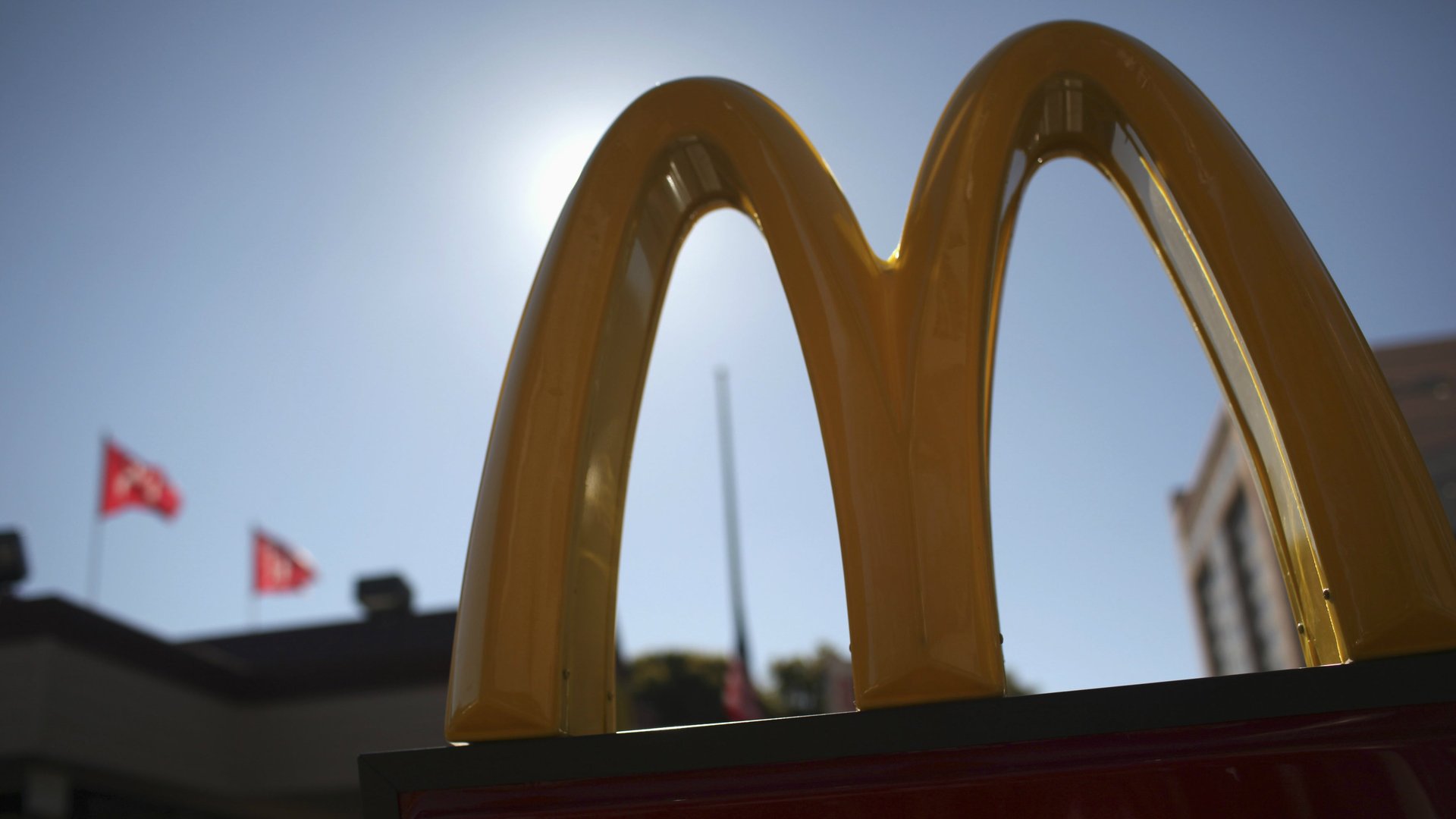Can McDonald’s really make healthier Happy Meals?
The world’s largest burger chain today (Feb. 15) said it was launching an effort to revamp its iconic Happy Meal, an effort to slash calories and make them healthier for the kids who clamor for them.


The world’s largest burger chain today (Feb. 15) said it was launching an effort to revamp its iconic Happy Meal, an effort to slash calories and make them healthier for the kids who clamor for them.
So just how do you make a burger-and-fries classic healthy?
That’s the challenge McDonald’s is up against as it seeks to better its reputation during a time when one-in-three kids in America is overweight or obese. The fast-food giant is taking cheeseburgers and chocolate milk off the Happy Meal menu (they can be added upon request), it’s continuing to promote apples and tangerines as sides, and its sticking to a years-long policy of not having soda on the kids menu. It will be adding bottled water to the offerings. The goal is to have all Happy Meal options measure in at 600 calories or fewer, with 650 milligrams or less of sodium.
The changes don’t come without some risk. Happy Meal orders have plummeted by 14% since soda was taken away four years ago, according to the Associated Press. Still, the moves help the chain distinguish itself from rivals such as Wendy’s, KFC, and Burger King. Families with kids tend to choose McDonald’s over rivals, elevating the importance of appealing to consumers who want their kids to eat healthier.
Data collected by Alliance for a Healthier Generation indicate that between 2013 and 2016 there was a 9.4 percentage-point increase in orders for milk, water, and juice with Happy Meals across 13 of McDonald’s markets, including the US. It’s an indication that there’s an appetite for healthier foods.
McDonald’s isn’t operating alone. Its changes are set against a backdrop of major global food brands—including Nestlé, Unilever, Panera Bread, Starbucks, and Chipotle—that have made an effort to improve their nutrition profiles or add more fresh produce. It’s no longer enough to serve up a decent-tasting burger: The quick-service restaurant space is too competitive to ignore the growing push among consumers for healthier foods.
Most companies, though, have a long way to go. Research published in 2014 in the journal Public Health Nutrition characterized the healthfulness of fast food in America to be mediocre, at best, according to The Washington Post.